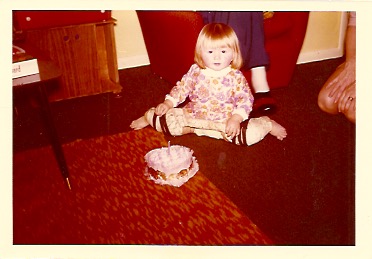I was born in 1971 with Congenital now called Developmental Dysplasia of the Hips (DDH or CDH for short). The treatment for this, then, was to put you in double nappies to hold them in place. If that didn’t work then they’d pop the hips back in place in surgery, and then hold them there in a big plaster-cast called a Hip Spica (modelled rather fetchingly by me in this picture, aged 1). I actually have fond memories of ‘helping’ mum and dad replace the plaster over the knees where I’d worn it out crawling. It was like papier-mache with your own legs, which when you think about it is very cool!

For many kids born with this condition, they’d be out of the Spica and walking after a number of months. But I was different. Whilst the ball at the top of my right hip is too flat, so it doesn’t rotate properly, the left side was the real challenge – the ball was little more than a pin-head and the socket on the left side was just plain missing. And my knees and ankles were a bit odd too. They’re very loose and just don’t want to stay in place.
I was lucky to be born in Sheffield – home of the leading pediatric orthopaedic hospital in the UK. So, after 8 operations they managed to hitch the femur to a bit of pelvis grafted from elsewhere, and I then learned to walk. More of a lurch sometimes to be truthful – but it got me from A to B quite well really. Finally, by way of a couple more operations aged 7 and 16 (where I had leg lengthening surgery), I had a hip replacement aged 32, a knee replacement aged 50, and a revision of my replaced hip in 2025, aged 53. I’m now a real-life bionic woman who walks with an ‘unusual’ gait.
I live in Walton on Thames with my partner and over-indulged cat. I’m a marketer by trade and I love to swim, sing in a choir, and I’m at my happiest when I’m gardening or out in nature.
I started this blog in 2018; a personal journey to understand myself better, and how my different-ability has influenced who I am today. I write to raise awareness of hip dysplasia and living with this condition that affects more than 1 in 1000 people.
